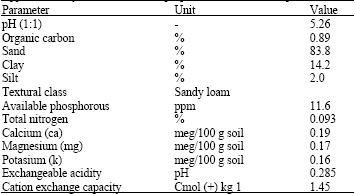Research Article
Comparative Effects of Two Nitrogen Sources on the Growth and Yield of Roselle (Hibiscus sabdariffa) in the Rainforest Region: A Case Study of Benin-City, Edo State, Nigeria
Department of Crop Science, University of Benin, Benin-City, Nigeria
K.E. Law- Ogbomo
Department of Agriculture, Benson Idahosa University, Benin-City, Nigeria















